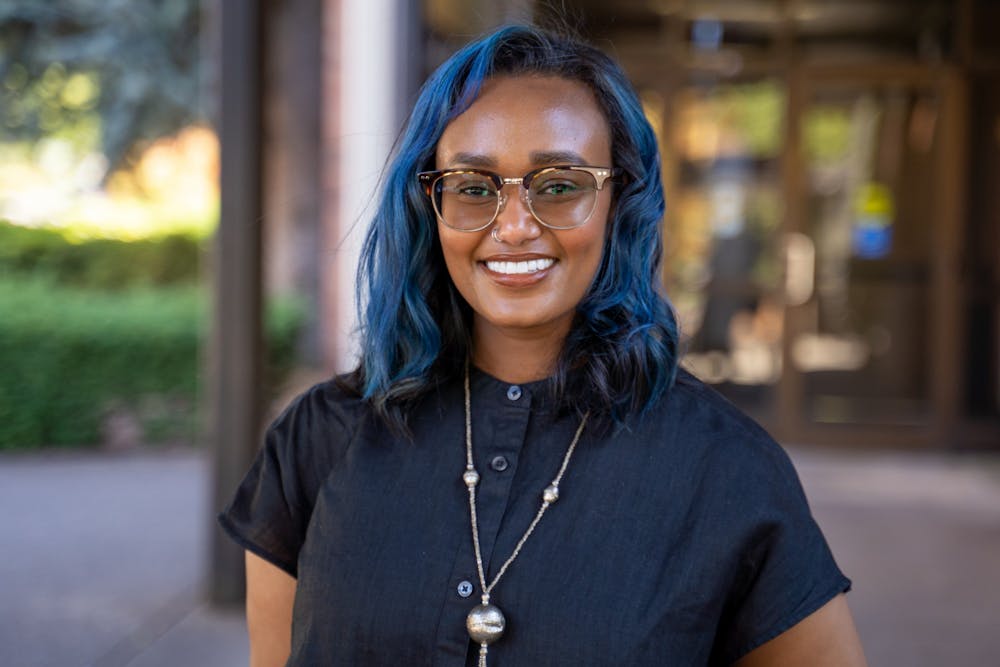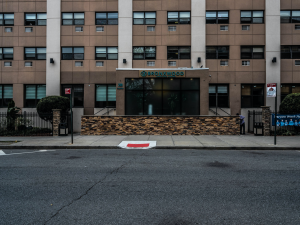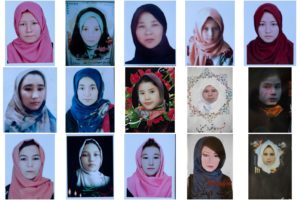by Jayla Fernandez , by Peytynn Kubo , by Ndemoh Sesay and by Adeline Paguirigan
This year’s freshman class is one of the most ethnically diverse classes UP has seen in recent years. 59% of the freshman class at UP identifies as a person-of-color.
Diversity did not only increase in the student body, but also within faculty. UP’s Ethnic Studies cohort also hired eight new BIPOC (Black, Indigenous, person-of-color) faculty. The cohort was brought in to ensure that faculty from BIPOC communities are getting hired at the University.
“It was a process of making them understand what’s unique about UP and what UP offers that other places didn’t offer,” Amy Ongiri, director of UP’s ethnic studies program, said, “And we were very successful in doing that and got really innovative and exciting scholars.”
Faculty Perspectives
Ongiri oversaw the Ethnic Studies hiring cohort, which also advocates that student demographics get reflected in the school faculty.
“You don’t get the kind of innovative worldview if everybody is the same, you know,” Ongiri said. “You don’t address the needs of people who are actually paying here as students if you really insist on not having a certain racial and ethnic diversity.”
Among those hired under the cohort were Maye Henning and Azeb Madebo.
Madebo is a new communications professor who graduated from USC with a doctorate in communication and journalism. Her main focus in the realm of communications and media is the ways communities and movements are formed, especially in the field of politics and activism.

Madebo grew up in Ethiopia and immigrated to the United States at age six. At a young age, she began to notice differences in the roles race and ethnicity played in the US compared to Ethiopia.
“I was very aware of how race was being constructed around me and how I was becoming a racialized person,” Madebo said. “Because where I came from, people look like me. The differences were ethnic, not racial.”
Through middle school and high school, Madebo found herself to be among the only Black students in her space, especially in advanced-level classes. Along with microaggressions and other forms of exclusion, Madebo noticed gaps in how issues of race were hardly covered in her courses.
In college, she found representation and support through the women of color who mentored her, as well as finding ways to teach herself about issues that personally interested her. Madebo hopes that her position as a professor will allow her to provide representation and a support system that she found in college.
“I mean, that’s the whole point about representation, right?” Madebo said. “It’s like, if you can see yourself in somebody or in a field, you’re more likely to take it up as something of your own right.”
Throughout her time here, Madebo hopes to help students understand the relevancy that communication has to systems of power and identity, especially the ways that technology and social media are used in protests.
“That would be one of my biggest goals, and taking the critical approach to my study of communication and media means that I am often talking about identity,” Madebo said. “I’m often talking about our relationships to systems of power, but I’m also talking about how we can use media and technology to resist against systems of power– how we can create the kinds of change that we might want to see in the world.”
Another new BIPOC faculty member is Henning. She is a new assistant political science & global affairs professor at UP. She grew up on the East Coast in a small town in Connecticut.

When Henning moved to Baltimore to pursue her doctorate, she appreciated the diversity in the city.
“Right outside of Baltimore is Ellicott City, which has one of the largest Korean populations in the entire United States,” Henning said. “I spent a lot of time out there.”
After interviewing at different institutions around the country, she decided that UP was her favorite place. However, she knew that she would be playing an important role on campus for the BIPOC community.
“I learned, as I was being hired, that part of my new role here would be to contribute to diversity in the city and the University, and in particular, support students.” Henning said. “I know that the student population is becoming more and more diverse, and that’s really exciting to see. I feel like I’m a part of something that’s a really important transition now at the University.”
Henning hopes that BIPOC students see figures in faculty, such as herself, and feel empowered and like they can accomplish anything they work hard for.
Both professors are excited to bring their unique insights to guide students of color. They hope that they can be mentors and provide a sense of belonging and inclusion to the growing number of students with diverse backgrounds.
BIPOC Student Perspectives
Many students of color on campus are optimistic about the changes in demographics at UP.
Jessy Villada, co-cultural chair of UP’s Latinx Student Union, is excited about the community-building that a more diverse student body will mean for students of color at UP. She recalls the discomfort of attending a predominantly white campus her freshman year.
“Having a more diverse campus, I feel like we’re gonna have more of a community,” Villada said. “I was originally from Roosevelt, which is one of the most diverse high schools in Oregon. So coming from a setting where it’s so diverse to a campus where it’s very predominantly white, it’s a little nerve wracking.”
Khoa Van, engagement ambassador for the Vietnamese Student Association, similarly felt excited for the new perspectives that a more diverse student body will bring.
“By having more people of color in our school, it adds perspective and adds more experiences– different experiences,” Van said. “And from that, I think we can learn a lot from said different experiences, whether it be through culture, language, honestly, anything that we have to offer.”
While students are excited about the demographic changes, many hope that the administration can address the needs of students of color.
Nia Moquino, the President of UP’s Native American Alliance, feels the school needs to improve its outreach to communities of color and ease the creation and involvement of students in DEI spaces.
“I feel like it’s up to the students to create their own communities just because the campus is not facilitating these spaces,” Moquino said. “I think there could be more support for the clubs – reaching out to more people of color in high schools, creating scholarships and different opportunities for people who are going to come to UP.”
Many students stress the importance of their cultural and DEI-related clubs, since many of them feel that they provide necessary safe spaces and leadership opportunities for students of color.
Ashleen Akkal, President of UP’s South Asian Student Union, feels that clubs and the advertisement of DEI-centered spaces empower students.
“Giving students a little more power, especially clubs, or listening to us a bit more is really important,” Akkal said. “Just implementing more spaces for people of color, like I know we have a diversity inclusion office. People don’t really talk about it as much and until it’s found.”
Despite the loss of key DEI staff last year, many students feel persistent and motivated to fill the gaps left by the administration.
Ananya Rao, the social media coordinator for the South Asian Student Union, describes what the loss has meant for many students involved in DEI work.
“I definitely feel like the past couple years have been kind of rough because of the loss of staff that have been really influential,” Rao said. “I think that loss is a wake up call for our community to really step up and take charge of what we can do as students and also faculty on campus.”
While there continue to be concerns with diversity issues on campus, many students feel that the hiring of more BIPOC professors and higher admittance of students of color have been a positive change for UP. Despite the setbacks from last semester, BIPOC students and faculty are driven to bring about the change they wish to see on campus.
Tiffany Marquez Escobar is a reporter for The Beacon. She can be reached at marqueze25@up.edu
Carlos Moreno-Vega is a reporter for The Beacon. He can be reached at morenove23@up.edu




